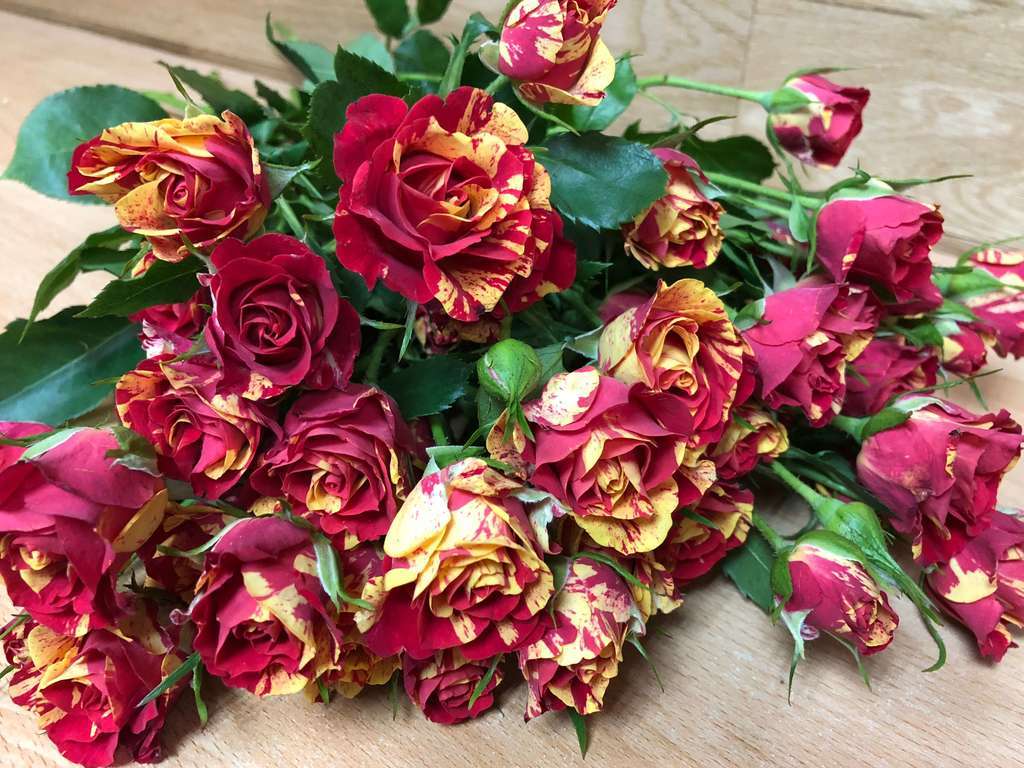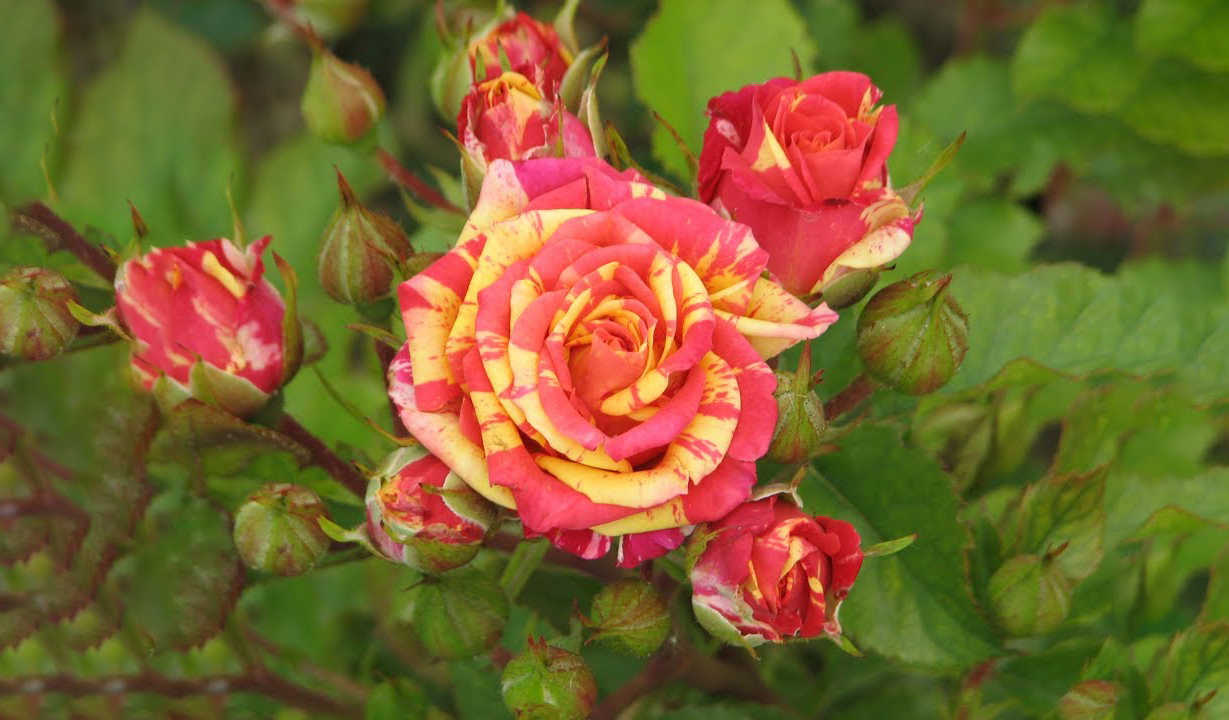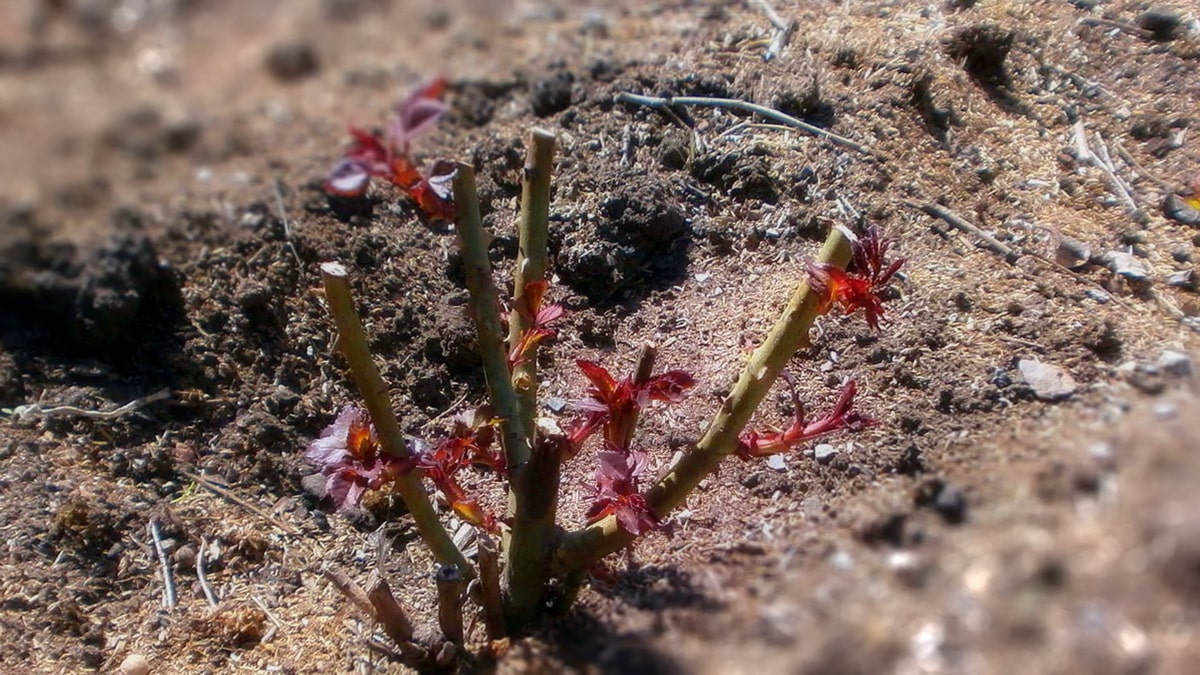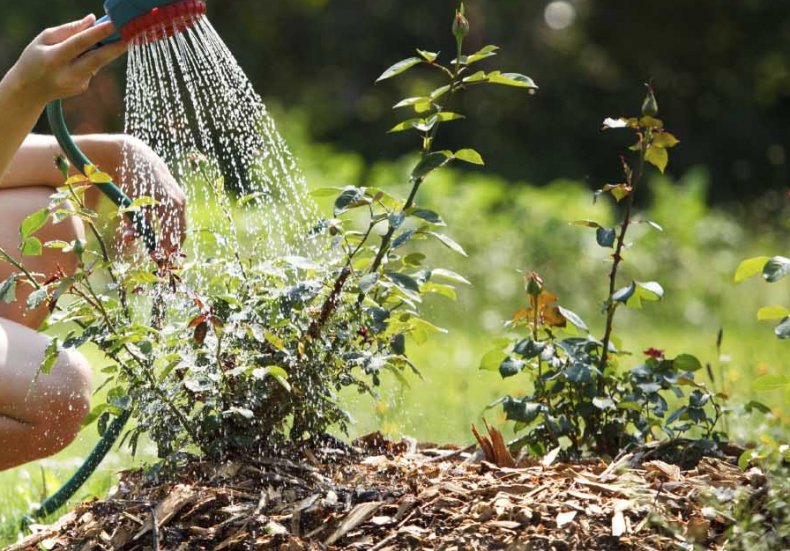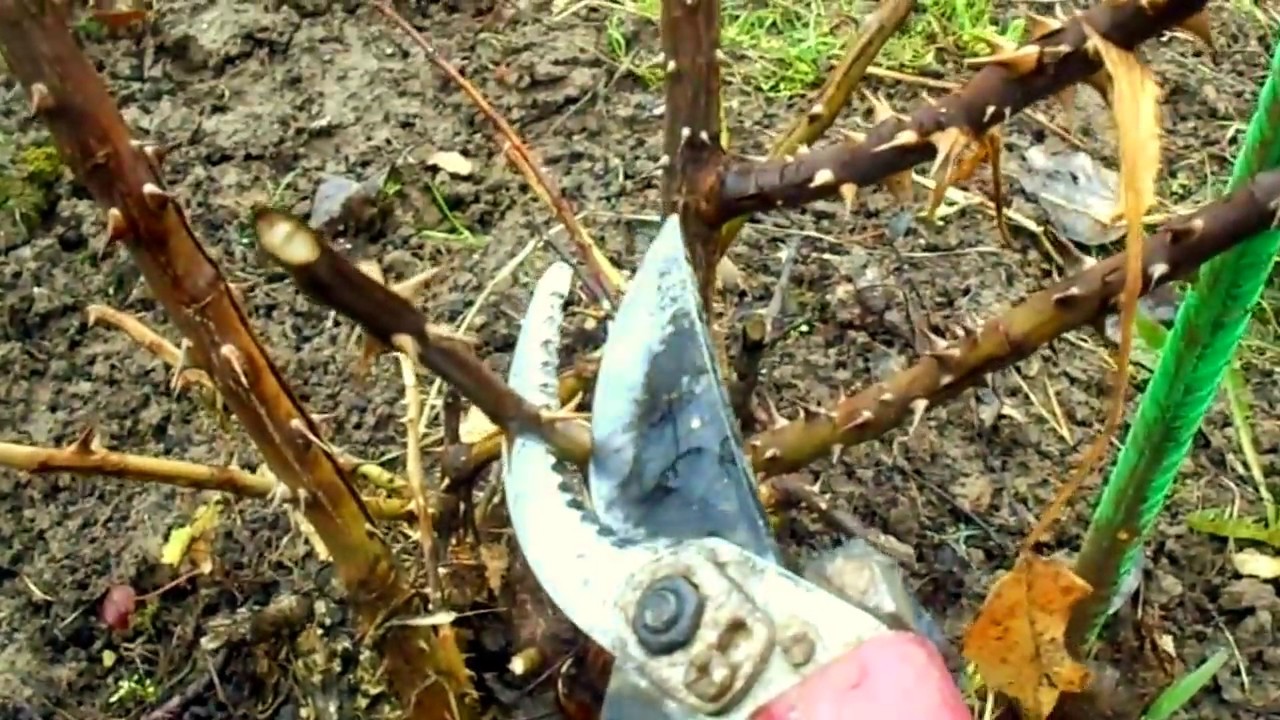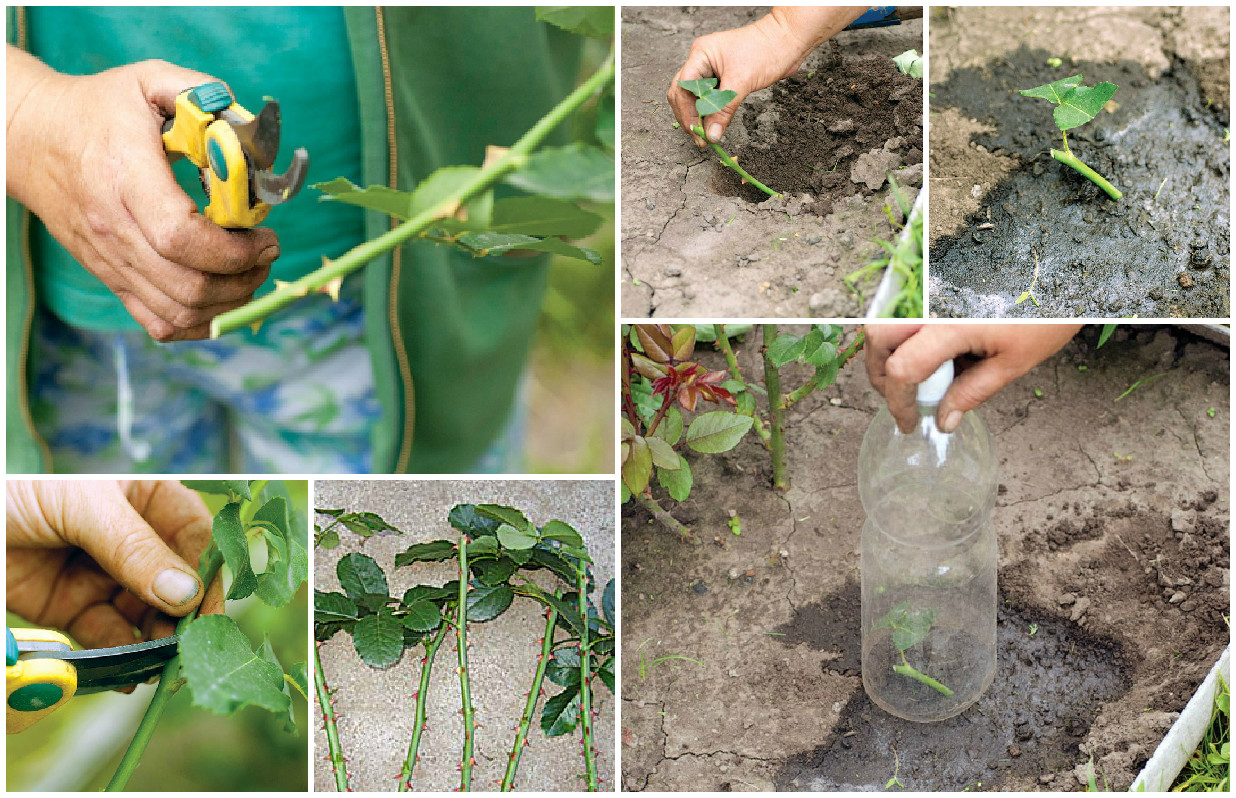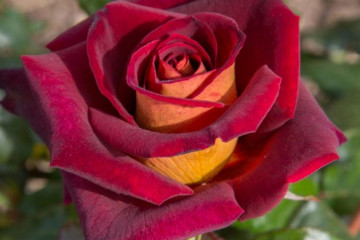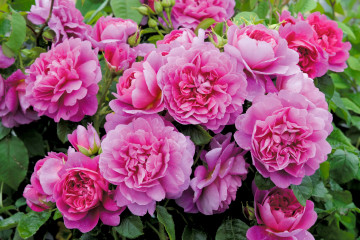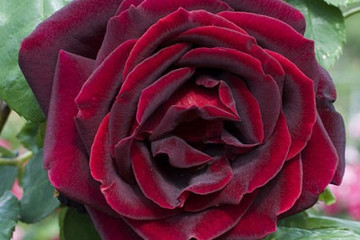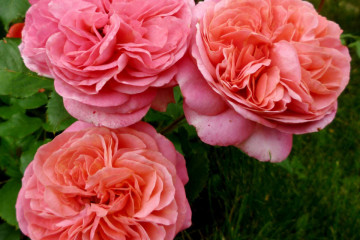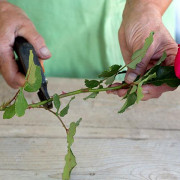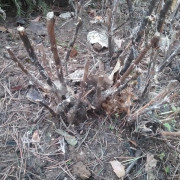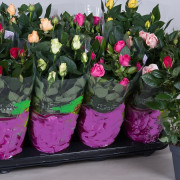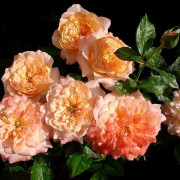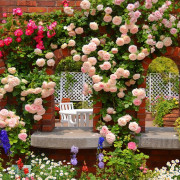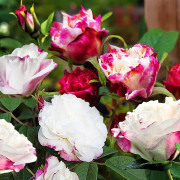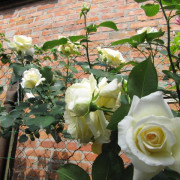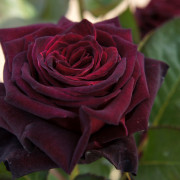Rose Fire flash (Fire flash) - variety description
Content:
Roses have been the most demanded and popular crops in the flower market for decades. Their fabulous bloom and wonderful aroma won the hearts of gardeners. In the second half of the last century, a separate group was identified - spray roses of the floribunda type. Against the general background of different heights of pink shrubs, the spray rose with a bright flash stands out with a bright flash.
Rose Fire flash (Fire flash) - what kind of variety is it, history of creation
The Dutch breeders of the Interplant company were involved in the origin of the Fire Flash variety. They are mainly engaged in breeding roses for cut or indoor crops. The name of the noble plant is translated as "fiery flash", as evidenced by the coloring of its buds.
Baby flash of compact size. The bush reaches a maximum height of 70 cm. Strong shoots with small dark leaves. The buds are small, classical in shape, collected in cluster inflorescences from 5 to 10 flowers each.
Perennial original in flowering color. Two colors are mixed in it: a crimson shade with bright red blotches. Due to the variegated color, the rose looks spectacular and elegant. The bushes bloom with the onset of May and do not cease to delight until the first frost.
Advantages and disadvantages of the variety
There are no downsides to this flower. But there are many advantages:
- unusual colors of buds;
- lush, long flowering;
- a large number of buds on one shoot;
- resistance to many types of diseases;
- unpretentious care;
- very low prickling of shoots;
- weather resistance;
Use in landscape design
Flushing rose always looks favorably against the background of any garden, park or greenhouse. Used in the design of mixborders, flower beds and robots. The Dutch woman is often decorated with soda lanes and borders. Solo effectively against the backdrop of a mowed lawn. Compact bushes are planted along fences, around gazebos and benches. The culture will highlight the beauty of the sculptural ensembles and fountains. It stands out elegantly among fragrant grasses, lilies, ornamental grasses and undersized conifers.
Growing a flower, how to plant it in open ground
The plant is not capricious, which means that novice florists can easily cope with some of the nuances of its cultivation. The place for planting a bush rose Flash fire should be well lit and not be in drafts.
For a planned planting, you should prepare several months in advance. Choose a place, prepare the ground:
- remove weeds along with roots;
- dig up the place reserved for the rose;
- prepare trenches;
- apply organic fertilizers;
- withstand the landing site for several months.
The soil for planting should be slightly acidic. To normalize the acidity balance, it is diluted with ash, compost, humus or dry needles. Experienced gardeners recommend planting the plant in the spring, after preliminary autumn soil preparation.
Seedling preparation
Before planting in the ground, the seedling is pruned, damaged leaves and branches are removed. No more than 5 eyes are left on the main shoot. Lateral and dry roots are removed. Next, the seedling is kept in a sodium humate solution for 12 hours.
The procedure for planting a rose in the ground
By adhering to some rules for planting a Dutch woman in open ground, you can get a healthy, strong plant in the future. The procedure takes place in several stages:
- Treatment of a seedling with growth stimulants.
- Adding compost or peat to the topsoil.
- Formation of a landing hole, the width and depth of which is 40 cm.
- Formation of a drainage layer at the bottom of the hole.
- Moving the seedling into the prepared hole with its further dropping.
- Abundant watering.
The distance between the rose bushes should be at least 35 cm. This will provide sufficient air circulation to the lower leaves and will prevent some diseases.
Culture care
An ornamental perennial is an unpretentious plant. Care procedures will not cause difficulties with a competent approach.
Watering
Regular hydration is the key to abundant and long-lasting flowering. The drier the weather, the more moisture the flower needs. Water should only get under the root. Watering is carried out after the top layer of the earth dries out.
To save water resources and slow down the drying out of the soil, mulching is recommended.
Fertilizers
The Fire flash rose, like other ornamental plants, needs regular fertilization. It is especially important to feed the queen of gardens during bud set and during flowering.
Nitrogen fertilizers are relevant for maintaining budding. The end of flowering coincides with the introduction of dressings containing a large amount of phosphorus and potassium.
Fertilizers can be purchased at flower shops or prepared at home according to the description of folk solutions and decoctions.
Pruning
The pruning procedure should be carried out with a special garden pruner, disinfected with alcohol. Processing the tool will save the plant from fungal infection.
Pruning takes place in several stages:
- Spring pruning. It is needed to get rid of frozen and sick shoots.
- Summer pruning. It is carried out to thin out and form a bush, by cutting off too actively growing shoots inside the bush.
- Autumn pruning. With its help, weak shoots are removed, in order to avoid their freezing during wintering.
These manipulations are carried out for the prevention of diseases and the rejuvenation of rose bushes.
Preparation for wintering
For proper wintering, the plant is spud and planned pruning is done. The stems are bent to the ground and sprinkled with sand. Sawdust, peat or spruce are poured over the sand.
An arc version of the flush rose shelter for the winter is airy. To do this, make a frame up to half a meter high and cover it with foam rubber and film.
Blooming rose
Rose flush releases its first buds at the end of spring and does not stop blooming until mid-October. During this time, 3-4 avalanches of flowering of a large number of buds are observed.
Periods of activity and rest
The dormant period for the Dutch flash is winter.All fertilization should be stopped immediately after the last flowering so as not to harm the plant during wintering. The period of activity is all warm months.
Care rules during and after flowering
To maintain a healthy and strong bloom, the plant needs quality care. Namely:
- feeding to stimulate the formation of buds;
- mulching;
- timely watering;
- pruning faded buds and weak shoots.
What to do if it does not bloom, possible reasons
If the plant refuses to release buds or has never bloomed at all, there are a number of reasons for this:
- wrong place of disembarkation;
- deep pruning;
- disease or pests;
- the age of the bush.
If no apparent reason is found, inoculation should be done, while getting rid of excess shoots and fertilizing the soil with potassium and phosphorus.
Flower propagation
The variety of border roses can be propagated in several ways.
Seeds
The most laborious, complex and unjustified breeding method is seed. Seeds germinate for a long time and not every gardener dares to do this. Therefore, this method is used mainly by breeders.
Layers
This is a method of burying the shoot from an adult bush. In a few months, the cuttings will give roots and be fully viable. After rooting, it is separated from the mother bush. The method of propagation by layering has proven itself well among gardeners.
Scion of roots
A young shoot with a root is separated from the bush and planted in a separate place.
By cuttings
The most common and simplest breeding method. Cuttings are cut from the middle of a strong shoot. With the help of a root growth stimulator in water, the root system is built up and planted in a greenhouse. There, the plant is gaining strength before planting in open ground.
By dividing
An adult bush is dug up and divided into several independent plants. The main condition for dividing is that each detached shoot has enough roots and several healthy buds for growth.
Diseases and pests
The Dutch garden queen rarely gets sick and suffers from pests. If such a nuisance nevertheless happened, you need to familiarize yourself with the methods of struggle:
- Aphid. A common nuisance of all types of roses is small bugs that feed on the sap of the plant. In the fight against them, an aqueous solution of soap and mustard powder will help.
- Spider mite. Insects that suck the juice from the leaves, after which the foliage turns yellow. They are afraid of the effects of the phytoverm drug.
- Powdery mildew. Fungal disease that covers the plant with a white bloom. It is treated with a concentrated solution of soda or by treating the bush with a Bordeaux mixture.
- Rust. Appears during warm and humid spring with yellow-orange sporulation pads. The plant dries and deforms. For the treatment of a flower, iron vitriol and a copper-soap solution are used.
Compact, miniature rose Flush Fire is good as a flower garden decoration and in bouquet arrangements. Its unpretentiousness in cultivation and care will be appreciated by any gardener.
